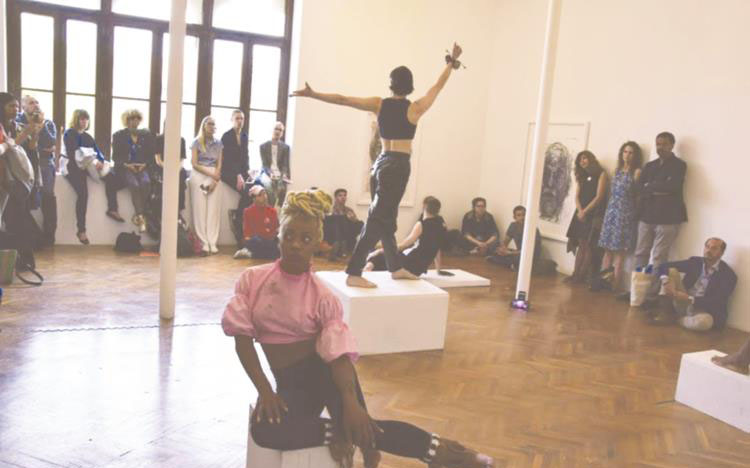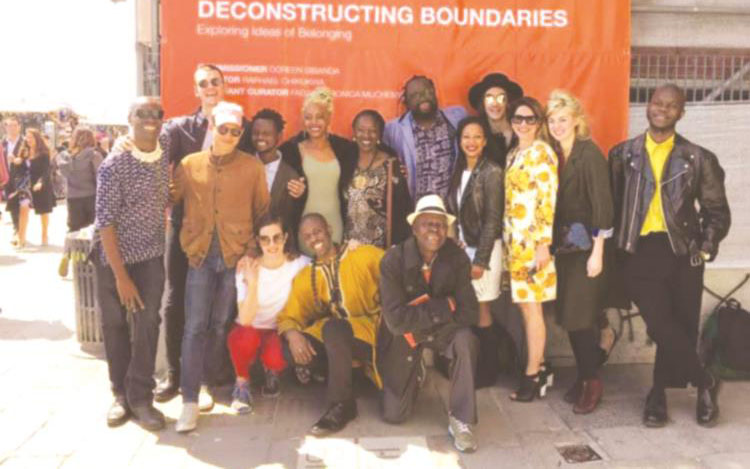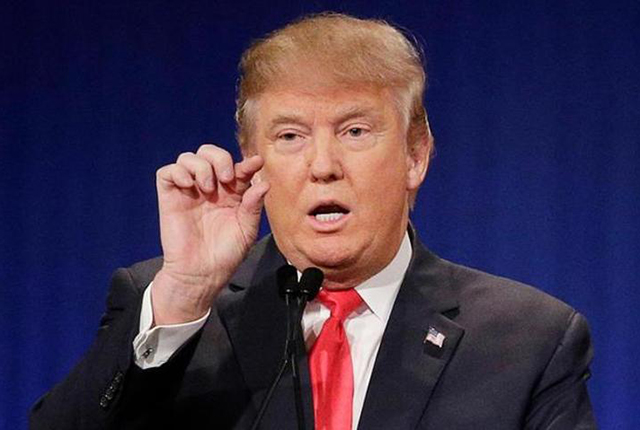60 years of promoting visual art

Correspondent
The National Gallery of Zimbabwe has hosted about 1 000 exhibitions since its inauguration in July 1957.
The first ever exhibition showcased at the Gallery was an enormous undertaking, involving the loan of many art objects from around the world, with most of the work coming from some of the world’s most prestigious galleries and museums.
The first director of the Gallery, Frank McEwen, selected the loans in three parts; old masters, impressionists and contemporaries. While he expressed doubt over his ability to persuade international galleries to lend important works to an as yet unknown, remote art gallery, McEwen succeeded in borrowing approximately 200 works of art, mostly paintings and a selection of tapestries, from galleries such as the Louvre and the Musée de l’Art Modern in Paris, and the National Gallery and the Tate Gallery in London.
The exhibition was entitled From Rembrandt to Picasso and was fully representative of works by European artists within that expanse of time, and included a selection of Italian Renaissance artists.
Of note is the strategic partnership which enabled the first exhibition to be a huge success.
From the first exhibition, the Gallery continued to develop partnerships which led to the rise of local art talent. Through the support of corporates and Non-Governmental Organisations (NGOs) visual arts became a force to be reckoned with.
It led to the development and encouragement of new art mediums such as metal sculpture, painting, print making which boosted the level of creativity showcasing that Zimbabwean artistic talent had more than just the stone sculpture capability. It also placed the country on the global map of the arts world.
Corporates such as Mobil, Anglo American, Baringa — Nedlaw, Oxyco, MBCA Bank Limited, funded various art exhibitions and sponsored ample awards for the participating artists. This also increased the level of competition among the artists which amplified the quality of the work they produced.
As Zimbabwe’s Oldest and most significant event on the arts calendar, the first Federal Annual Exhibition, later named the Annual Exhibition, was held in 1958, and became the most important fixed exhibition in the gallery’s schedule. Eleven years later, in 1969, it was recorded in the annual report that this exhibition had become a local version of the Royal Academy Summer Exhibition.
Local artists worked all year on the pieces which they entered for selection, and it drew the highest number of visitors to the gallery over the course of the year. It indirectly led to the creation of the much acclaimed Zimbabwean Sculpture movement during the 1960s and 70s.
The Annual Exhibition continues to grow and has proven over the years to be a viable platform for Zimbabwe’s artists to showcase their creativity, diversity, talent and originality with a central theme, despite having faced some challenges in the year 2000.
Other annual exhibitions which became very popular under McEwen’s directorship were the Child Art Exhibition. This later became the annual Schools Exhibition.
Through the partnership with the Environmental Management Agency (EMA) in the past three editions, the Gallery has been able to host the Tavatose/Sisonke Schools Annual exhibition; a show based on unity which brings pupils of different backgrounds together to express themselves through art.
The exhibition aims to promote creative talent from a young age and celebrate our artistic heritage as well as the fact that there has been a greater motivation for art to be introduced and recognised as an imperative subject in schools. In addition, the exhibition seeks to develop a greater awareness of the importance of keeping the environment clean; developing awareness at an early age around issues of improper handling of waste and its risks to the environment and human health and awareness of how recycled waste can contribute to sustainable development.
This promotes young talent while raising awareness to environmental issues. The arts are one of the biggest platforms of expression and potentially important contributors to social cohesion and nation-building through the promotion of inter-cultural dialogue, understanding and collaboration.
The Harare Conversations initiative was introduced at the National Gallery to facilitate a discursive platform for artists, students, teachers, and general members of the public to interact, share experiences and articulate challenges facing the visual arts in Zimbabwe and to come up with plausible solutions on how to overcome those challenges.
The conversations feature informative discussions, presentations and talks by local and international artists, curators, and creatives from the world of visual art, film, fashion, theatre and other media.
Through this platform, artists are able to discuss issues that are an extension of the exhibitions and tackle issues which affect their practice.
The visual arts can help us express our values, build bridges between cultures, and bring us together regardless of ethnicity, religion, or age.
The Gallery has over the years been able to build partnerships and facilitate travelling exhibitions, which function as inter-cultural and knowledge exchange shows. One example is the travelling exhibition ‘KabboKaMuwala — The Girl’s Basket’ a contemporary artistic expression of perspectives on African migration with an emphasis on Southern and Eastern Africa.
It was a joint project of the National Gallery of Zimbabwe, the Makerere Art Gallery in Kampala, StädtischeGalerie (Municipal Art Gallery) Bremen, and Carl von Ossietzky University Oldenburg, Germany.
The travelling exhibition that explored the theme of migration, dispersion based experiences and the physical and psychological barriers that affect migrants.
KabbokaMuwala thus served as an indicator of numerous experiences people from across the globe are going through as they migrate for divergent reasons and as another platform for the Gallery to elevate visual arts in Zimbabwe.
Other initiatives to elevate visual arts include the Educational Outreach Programme. The Outreach Programme at the Gallery was introduced as an initiative to equip School Teachers and students with the necessary skills to develop artistic talent within their faculties.
The Education and Public Programming Department facilitates Workshops at a school, district and provincial level where they advise educational professionals on matters pertaining to the universal tenets of art according to syllabus and the new Education Curriculum which supports arts education from a very early age. As such there is a theoretical and practical transfer to the tutors which can easily be transferred to their learners.
The Outreach and art clubs workshops are run by a professional team comprising the National Gallery of Zimbabwe’s Education Officer, the National Gallery School of Visual Art and Design’s art instructors.
This enables students to grasp artistic concepts at an early age with the hope that this will enhance creativity and entrepreneurial skills.
Arts are a cultural export industry. Currently four Zimbabwean artists, Charles Bhebhe, Dana Whabira, Sylvester Mubayi and Admire Kamudzengerere through the continued support from the Ministry of Rural Development and Preservation of National Culture and Heritage are showcasing their talent at the Venice Biennale which officially opened on the 10th of May 2017.
The four artists created new contemporary works, including sculpture, prints, drawings, objects, paintings and sound for the six galleries of the Zimbabwe Pavilion.
The contemporary artists and their experiences in the ever changing world were the source of inspiration for the Zimbabwean Pavilion at Venice theme De-constructing Boundaries: Exploring Ideas of Belonging.
Through this international platform, facilitated by the National Gallery of Zimbabwe provides another perspective on the themes of humanity, allegory, identities, migration, patriotism and belonging at a global level.
This milestone amongst many others that we have had would not have been achieved without the tremendous support that the Gallery has had and continues to receive.
It is this support that has enabled the National Gallery of Zimbabwe together with the public, to remember our cultural history, elevate local visual artists, and spotlight the contemporary relevance of art from Africa.
As we look back to 60 years of being in existence, it is of essence to look back at some of the key exhibitions that were held at the Gallery and key partners who have supported the Gallery over years.











Comments